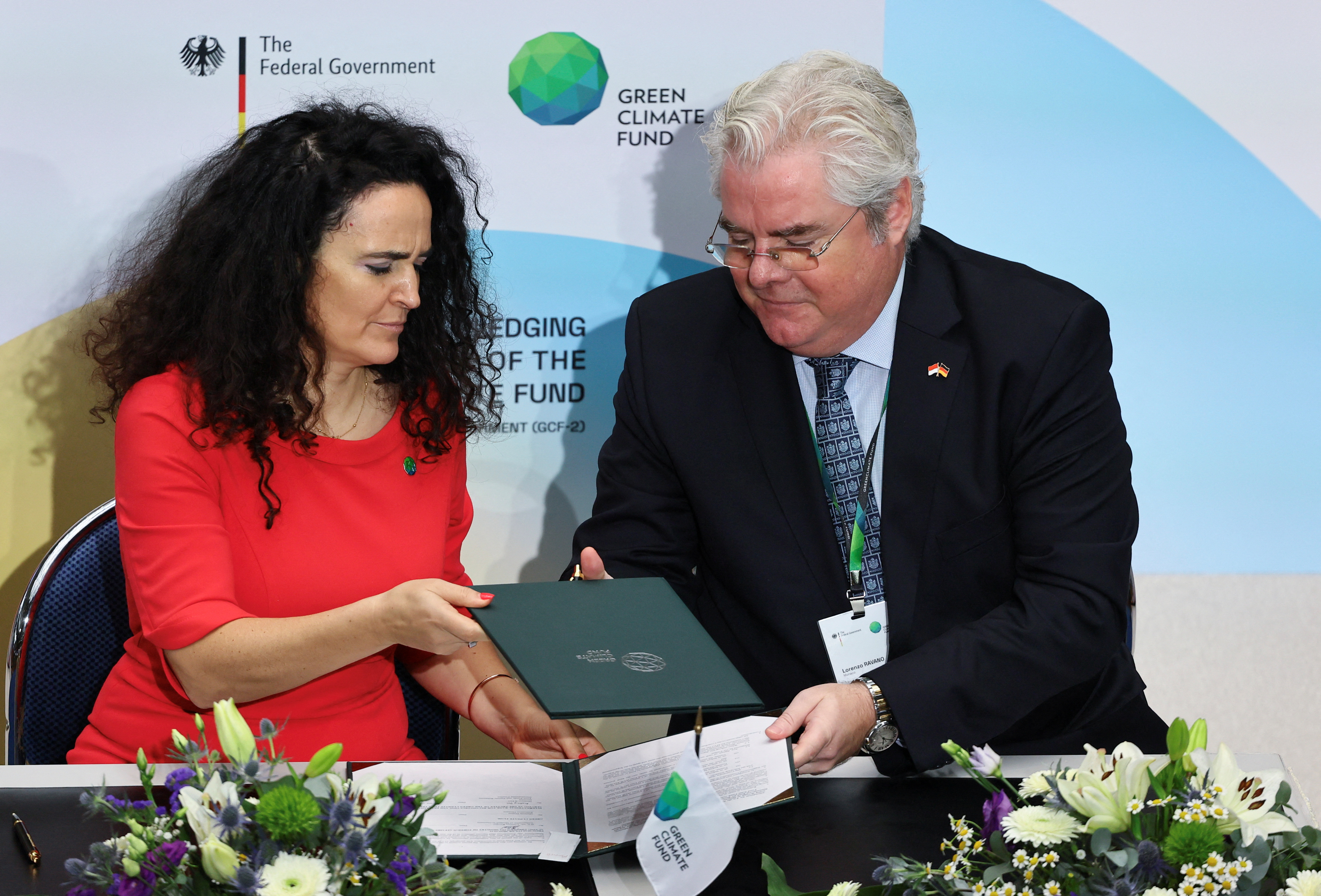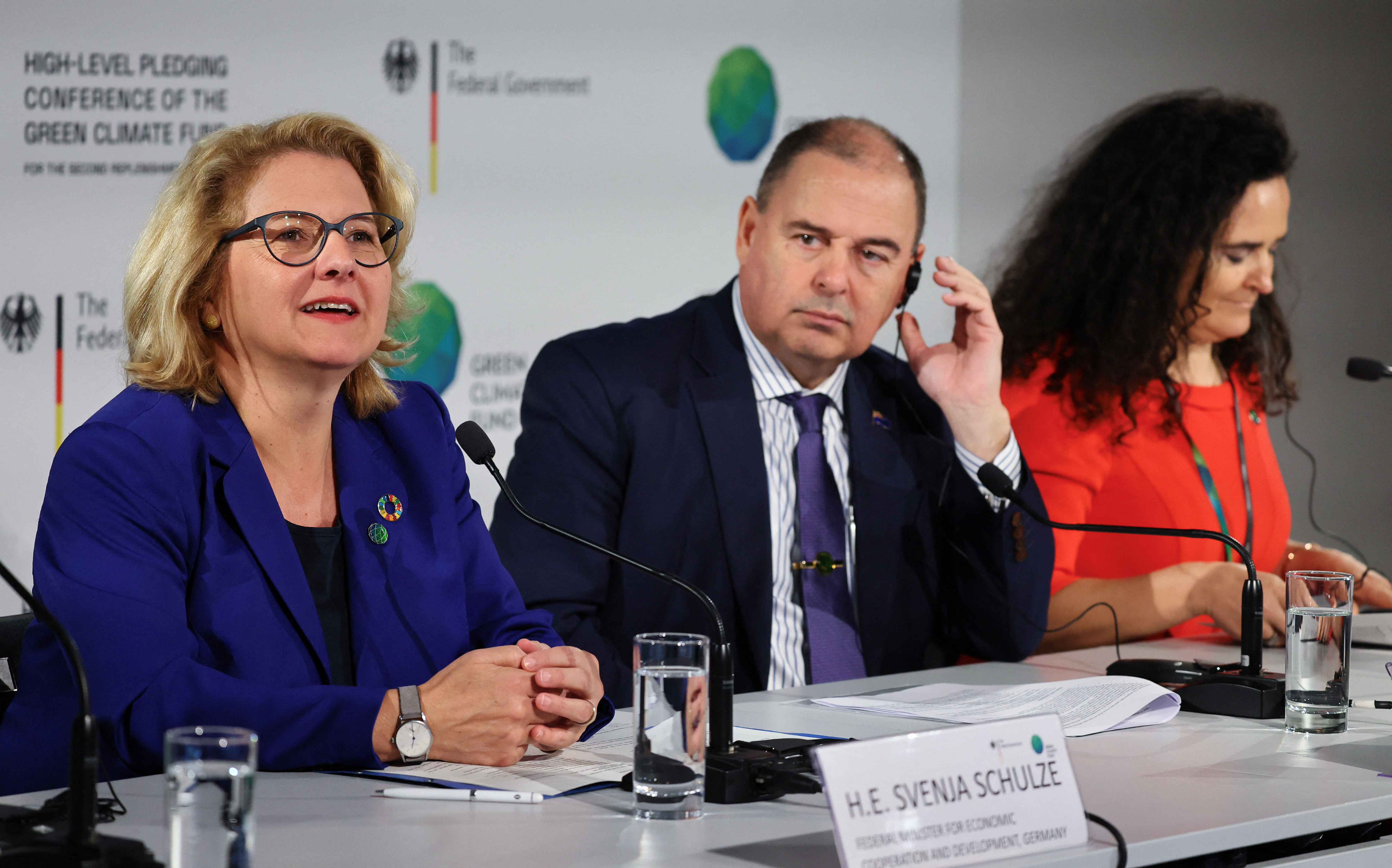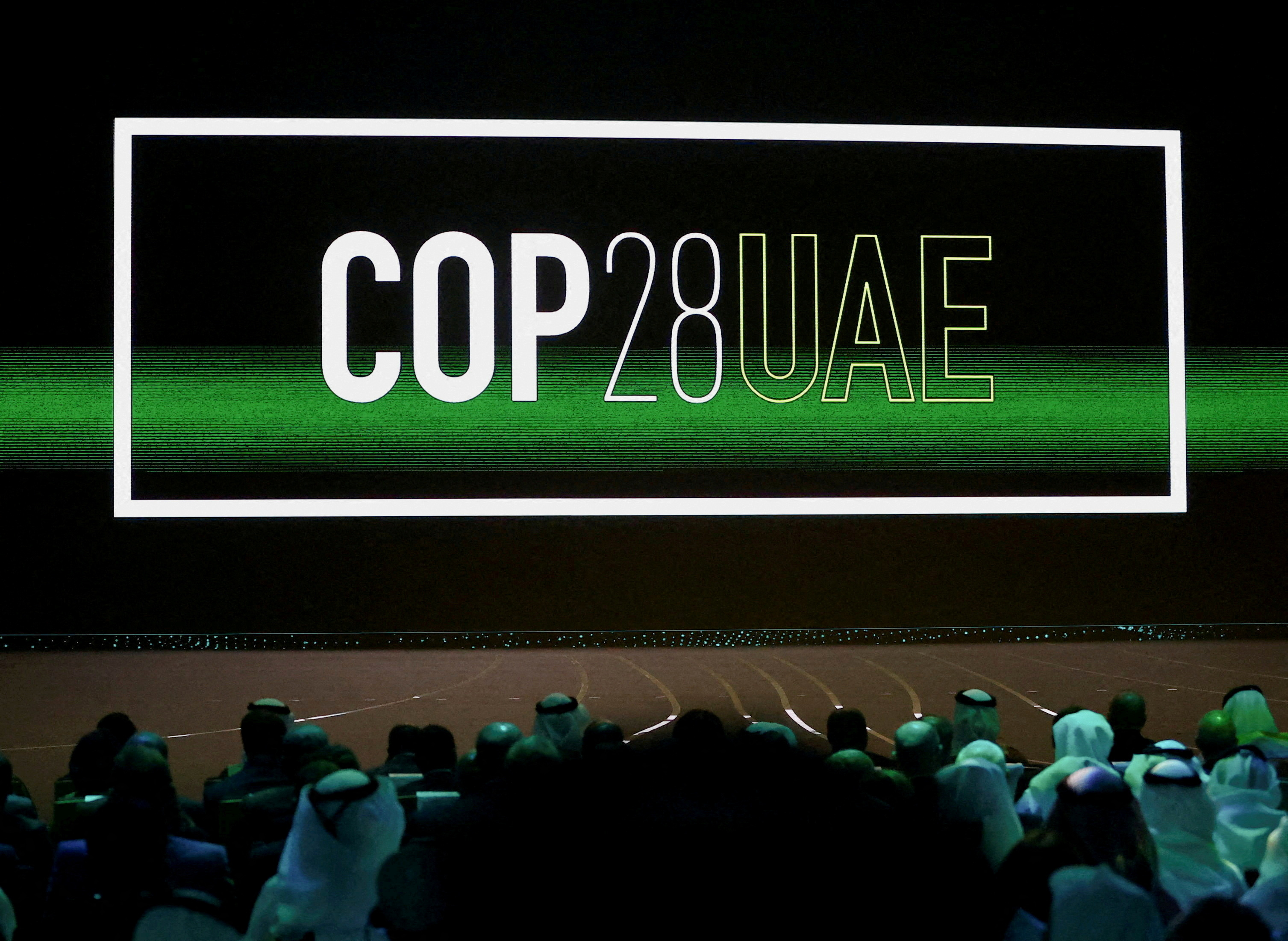United Nations climate change fund targets hard to reach communities


The new head of the United Nations Green Climate Fund, Mafalda Duarte (L), says it must forge relationships with local partners to ensure its funding finds its way to hard to reach communities. /Wolfgang Rattay/Reuters
The new head of the United Nations Green Climate Fund, Mafalda Duarte (L), says it must forge relationships with local partners to ensure its funding finds its way to hard to reach communities. /Wolfgang Rattay/Reuters
The UN’s Green Climate Fund (GCF), bolstered by fresh pledges of $9.3 billion from rich nations, needs to change how it operates so it can work with more local partners and get finance to vulnerable people “that haven’t really been reached,” said its new head.
Mafalda Duarte said in an interview that the world’s largest multilateral climate fund – which had capital of $17 billion before its latest replenishment – could team up with a wider range of organizations, supporting projects “that are closer to the communities and to the realities on the ground.”
“My premise is if we are to achieve the (climate) goals, we have to mobilize as much action as possible, and therefore we can’t rely on a network of a few dozen institutions – we really need to work with a much broader network,” she said ahead of the pledging conference in Bonn.
READ MORE
Slovakia introduces border checks
Florence bans short term rentals in the city
EU carbon tax trial gets under way
That means, for example, channeling more resources from the GCF to support local commercial banks and businesses in places like Kenya that are providing credit to farmers for clean energy equipment such as solar-powered irrigation or to switch to greener practices, said Duarte.
The Portuguese climate finance expert, who took the fund’s reins in August, told delegates in Bonn how climate-resilient agriculture projects backed by the GCF had improved the lives of women farmers she met on a recent visit to East Africa.

Duarte spoke alongside German Economic Cooperation and Development Minister Svenja Schulze and Cook Islands Prime Minister Marc Brown at a press conference. /Wolfgang Rattay/Reuters
Duarte spoke alongside German Economic Cooperation and Development Minister Svenja Schulze and Cook Islands Prime Minister Marc Brown at a press conference. /Wolfgang Rattay/Reuters
The GCF backs nearly 230 projects in 129 countries across Africa, Asia-Pacific, Latin America and the Caribbean and Eastern Europe, with a roughly even split between helping countries cut their planet-heating emissions by adopting clean energy and efforts to adapt to extreme weather and rising seas.
“It really requires understanding the context, understanding the communities, understanding the business models that will work,” Duarte said, noting that the needs are “much higher than what we are delivering.”
The United Nations estimates hundreds of billions of dollars are needed each year to help developing countries tackle global warming. Yet wealthy governments have fallen short on a promise to mobilize $100 billion annually for that purpose from 2020.
Senior German officials said on Thursday they believed the target would be met this year, with confirmation expected before the COP28 UN climate summit in Dubai, which starts on November 30.

Politicians are under pressure to deliver more aggressive plans to reach net zero at COP 28 in November. /Rula Rouhana/Reuters
Politicians are under pressure to deliver more aggressive plans to reach net zero at COP 28 in November. /Rula Rouhana/Reuters
U.S. pledge awaited
Climate justice groups expressed disappointment that wealthy governments – 25 of which promised a combined $9.3 billion to the GCF for the 2024-2027 period led by Germany, Britain, France and Japan – had pledged less than in two earlier rounds.
About 45 rich nations committed $10.3 billion in an initial pledging drive for the GCF in 2014 – and 32 countries gave $10 billion for its first replenishment in 2019, although the United States has yet to deliver $1 billion of its original 2014 promise of $3 billion by former President Barack Obama.
“Despite the small increases announced by many countries pledging finance today, the overall amount pledged to the GCF is nowhere near commensurate with the urgency this crisis and climate justice demands,” said Erika Lennon, senior attorney with the Center for International Environmental Law.
Duarte told a news conference that several more countries – the United States, Italy, Sweden, Switzerland and Australia – were still going through domestic budget processes and the GCF was “very confident” they would make contributions in the run-up to COP28, which would take the total above the 2019 pledges.
Australia’s Labor-led government said it would make a “modest pledge” this year, marking a return to the GCF after a former right-wing government stepped back from funding in 2019.
The U.S. has struggled to get Congress to approve large international climate finance allocations and said on Thursday it was “still working on our announcement” on a new GCF pledge.
President Joe Biden this year delivered $1 billion of the initial U.S. pledge, on top of $1 billion under Obama, but the shortfall in U.S. funding has been a political sore-point. Former President Donald Trump opposed GCF funding.
More money, simpler access
The GCF has also been under pressure to make it easier for developing countries to access its cash – something Duarte wants to make progress on under her new “50by30” vision, announced at the UN Climate Ambition Summit in New York last month.
That reform program aims to enable the GCF to efficiently manage capital of $50 billion by 2030 and deliver it “with significant impact” said Duarte, who previously ran the multilateral Climate Investment Funds.
She did not say how much the GCF would seek for its next replenishment from 2028, but noted the GCF aims to expand its pool of donors to include larger developing economies.
The “50by30” vision sets out to boost support for the most vulnerable people and communities, mobilize private-sector participation and investments, speed up review and approvals for projects, and prioritise programs that can transform economic systems over one-off efforts.
The GCF also plans to work differently with its partners, reducing “unnecessary complexity and transaction costs.”
Duarte said the current model had not foreseen the high level of demand for GCF funding and was “not fit for purpose.”
Today the fund has nearly 120 partners that are approved to deploy its finance – from U.N. agencies to international commercial banks, equity funds and environment ministries in developing countries. But Duarte noted that about 140 more are interested in becoming accredited to receive GCF money.
“Because of processes we have established around that, we are not able to respond effectively,” she said, calling for a tailor-made approach that suits the needs of different institutions in the public and private sectors.
“We have to meet the organizations where they are.”

Subscribe to Storyboard: A weekly newsletter bringing you the best of CGTN every Friday
Source(s): Reuters

